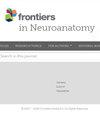Unveiling the vulnerability of the human abducens nerve: insights from comparative cranial base anatomy in mammals and primates
IF 2.3
4区 医学
Q1 ANATOMY & MORPHOLOGY
引用次数: 0
Abstract
The topographic anatomy of the abducens nerve has been the subject of research for more than 150 years. Although its vulnerability was initially attributed to its length, this hypothesis has largely lost prominence. Instead, attention has shifted toward its intricate anatomical relations along the cranial base. Contrary to the extensive anatomical and neurosurgical literature on abducens nerve anatomy in humans, its complex anatomy in other species has received less emphasis. The main question addressed here is why the human abducens nerve is predisposed to injury. Specifically, we aim to perform a comparative analysis of the basicranial pathway of the abducens nerve in mammals and primates. Our hypothesis links its vulnerability to cranial base flexion, particularly around the sphenooccipital synchondrosis. We examined the abducens nerve pathway in various mammals, including primates, humans (N = 40; 60% males; 40% females), and human fetuses (N = 5; 60% males; 40% females). The findings are presented at both the macroscopic and histological levels. To associate our findings with basicranial flexion, we measured the cranial base angles in the species included in this study and compared them to data in the available literature. Our findings show that the primitive state of the abducens nerve pathway follows a nearly flat (unflexed) cranial base from the pontomedullary sulcus to the superior orbital fissure. Only the gulfar segment, where the nerve passes through Dorello’s canal, demonstrates some degree of variation. We present evidence indicating that the derived state of the abducens pathway, which is most pronounced in humans from an early stage of development, is characterized by following the significantly more flexed basicranium. Overall, the present study elucidates the evolutionary basis for the vulnerability of the abducens nerve, especially within its gulfar and cavernous segments, which are situated at the main synchondroses between the anterior, middle, and posterior cranial fossae—a unique anatomical relation exclusive to the abducens nerve. The principal differences between the pathways of this nerve and those of other cranial nerves are discussed. The findings suggest that the highly flexed human cranial base plays a pivotal role in the intricate anatomical relations and resulting vulnerability of the abducens nerve.揭示人类外展神经的脆弱性:从哺乳动物和灵长类动物的颅底解剖对比中获得启示
150 多年来,人们一直在研究外展神经的地形解剖。尽管最初人们将其脆弱性归因于它的长度,但这一假说已在很大程度上失去了重要性。取而代之的是,人们将注意力转移到其沿颅底错综复杂的解剖关系上。与有关人类外展神经解剖的大量解剖学和神经外科文献相反,其他物种的外展神经复杂解剖学却较少受到重视。本文探讨的主要问题是为什么人类的外展神经容易受伤。具体来说,我们旨在对哺乳动物和灵长类动物的外展神经基本颅路进行比较分析。我们的假设将其脆弱性与颅底屈曲,特别是在脊枕骨突周围联系起来。我们研究了各种哺乳动物的外展神经通路,包括灵长类动物、人类(N = 40;男性占 60%;女性占 40%)和人类胎儿(N = 5;男性占 60%;女性占 40%)。研究结果从宏观和组织学两个层面进行了阐述。为了将我们的发现与颅底屈曲联系起来,我们测量了本研究中各物种的颅底角,并与现有文献中的数据进行了比较。我们的研究结果表明,外展神经通路的原始状态是从桥髓沟到眶上裂的近乎平坦(不弯曲)的颅底。只有神经穿过多雷洛管(Dorello's canal)的沟段表现出一定程度的变化。我们提出的证据表明,在人类发育的早期阶段,外展神经通路的衍生状态最为明显,其特征是沿着明显弯曲的基底颅走行。总之,本研究阐明了外展神经脆弱性的进化基础,尤其是其沟段和海绵段的脆弱性,沟段和海绵段位于前、中、后颅窝之间的主要会厌处--这是外展神经独有的解剖关系。本文讨论了该神经与其他颅神经路径的主要区别。研究结果表明,高度弯曲的人类颅底在复杂的解剖关系和由此导致的视神经脆弱性中起着关键作用。
本文章由计算机程序翻译,如有差异,请以英文原文为准。
求助全文
约1分钟内获得全文
求助全文
来源期刊

Frontiers in Neuroanatomy
ANATOMY & MORPHOLOGY-NEUROSCIENCES
CiteScore
4.70
自引率
3.40%
发文量
122
审稿时长
>12 weeks
期刊介绍:
Frontiers in Neuroanatomy publishes rigorously peer-reviewed research revealing important aspects of the anatomical organization of all nervous systems across all species. Specialty Chief Editor Javier DeFelipe at the Cajal Institute (CSIC) is supported by an outstanding Editorial Board of international experts. This multidisciplinary open-access journal is at the forefront of disseminating and communicating scientific knowledge and impactful discoveries to researchers, academics, clinicians and the public worldwide.
 求助内容:
求助内容: 应助结果提醒方式:
应助结果提醒方式:


